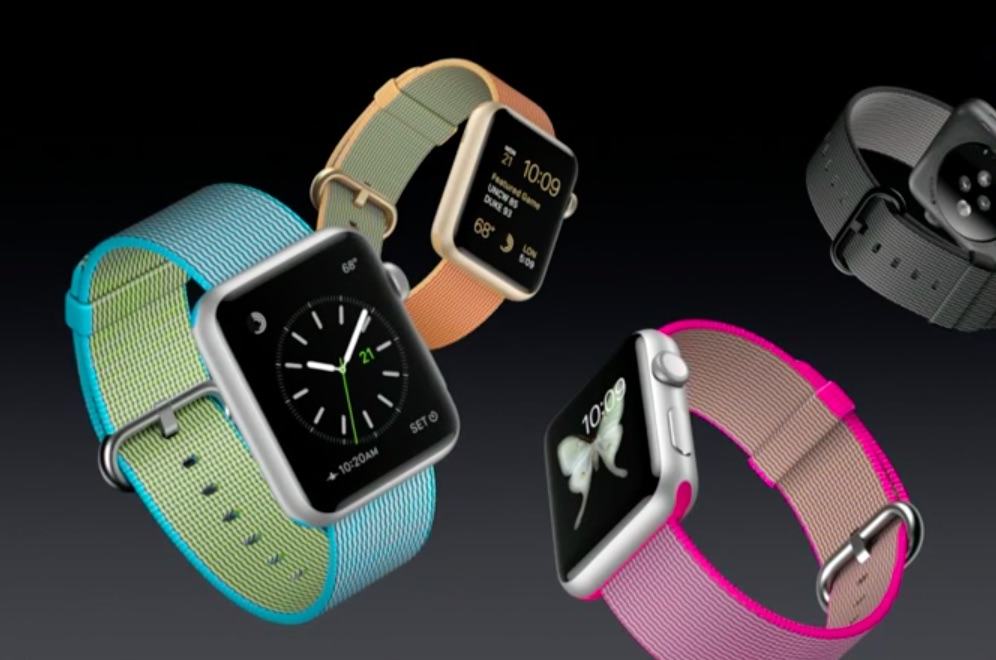At this week’s “Let us loop you in” keynote, Apple revealed a major shift in its smartwatch strategy. Tim Cook tried to dress it up by announcing new Apple Watch bands and a price drop, but the most significant aspect was what he did not say: There was no mention of third-party Watch apps.
After Monday’s keynote, Apple updated its website with a new marketing proposition that represents a tacit acknowledgment that, right now, Apple Watch is only good for three things: notifications, fitness and health.
What happened to the idea that there is an app for everything?
On Apple Watch, there isn’t an app for that
When Apple unveiled its smartwatch back in 2014, the company positioned the wearable as a tiny iPhone on your wrist. Like the iPhone, Apple Watch was versatile, supporting a wide variety of third-party apps. Much of its early marketing imagery focused on the app launcher’s colorful grid of circular icons.
This week, however, Cupertino erased all traces of the app launcher from the Apple Watch website. And the only third-party Watch app to be featured in this week’s keynote was NCAA March Madness Live — although only the notification was shown, not the app itself.
This is in marked contrast to the marketing of the Apple TV. At the event, Cook crowed that there are now 5,000 tvOS apps and once again claimed that apps are “the future of TV.”
It seems pretty clear that Apple no longer wants to talk about Watch apps. But why?
From features to benefits
Monday’s keynote and the website update make it clear that Apple Watch is now focused on just three benefits: notifications, fitness and health. This change is something that in tech marketing is described as switching focus from features to benefits.
Whereas Apple previously talked about features such as Siri or the App Store as standalone reasons to buy an Apple Watch, now they are only described in relation to the wearable’s three key benefits. Siri is positioned as a way of starting a workout or checking your heart rate. Third-party apps are only mentioned in the Notifications, Fitness and Health sections as extensions to the Apple Watch’s built-in core functionality.
Features that do not fit into one of these three benefits are consigned to a “More to love” section of the Apple Watch site. This is actually a euphemism. In reality, “More to love” is a dumping ground for all Apple Watch’s now-unloved features. Even former favorites such as Apple Pay, Digital Touch and Glances languish here, just because they don’t fit into Notifications, Fitness or Health.
Why? Because Apple Watch apps suck
I think this new focus represents a recognition on Apple’s part that Watch apps suck. Especially third-party apps, which have to be built using the frustratingly limited WatchKit framework.
With watchOS 2, Apple promised that developers would be able to build their own native apps. Which is true: You can now build Apple Watch apps that work even when the iPhone is out of range. But that does not mean they can be remotely as powerful as Apple’s built-in apps, which benefit from a framework only Apple’s developers have access to, called “PepperUICore.” For example, third-party apps cannot run in the background, can’t get the position of touches onscreen, can’t use swipe gestures nor multitouch, and so on.
This is probably due to the sluggish hardware and poor battery life of the first-generation Apple Watch. If Apple were to give third-party developers unfettered access, their apps could be a major drain on the wearable’s battery and further slow down its already bad performance. As one iOS developer put it to me, Apple Watch apps are a flop because “the hardware is just not ready for what Apple wanted to do with it.”
Maybe the Apple Watch 2, when released, will bring a significantly faster processor and better battery life. Until then, Apple is likely to stick to its new marketing mantra of notifications, fitness and health. However, this new positioning fails to differentiate Apple Watch from lower-cost alternatives such as Microsoft Band or Fitbit Blaze. (This may be why Apple dropped the Apple Watch price by $50.)
A rare climb-down for Cupertino
For some time now, I’ve found myself only using Apple Watch for timekeeping, notifications and fitness. And it seems I’m not alone. Maybe Apple has come to the conclusion that (right now at least) that is all the Apple Watch is good for.
This is a major change in how Apple talks about its smartwatch, but Cupertino seems to hope we won’t notice. Normally a change in strategy is something Apple spells out clearly during a keynote. This feels more furtive. Sheepish even. It’s a rare climb-down from Cupertino.
There’s reason to hope, though. In the iPhone’s early days, Apple’s smartphone was similarly limited in terms of what third-party apps were allowed to do. If you wanted to play music in the background with a third-party app, you had to jailbreak your phone. As the hardware of the iPhone has become more powerful, Apple has gradually given developers more possibilities.
A major hardware upgrade is required before Apple can grant third-party developers more access to the Apple Watch system. That’s when Apple Watch apps will finally become interesting.


